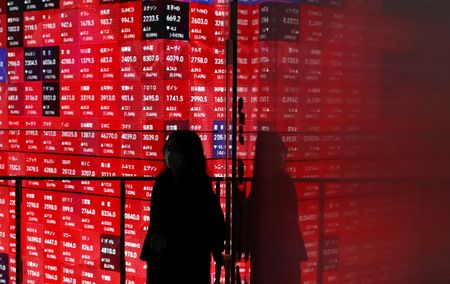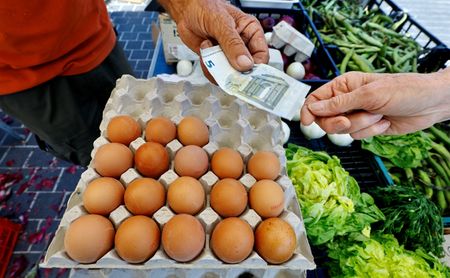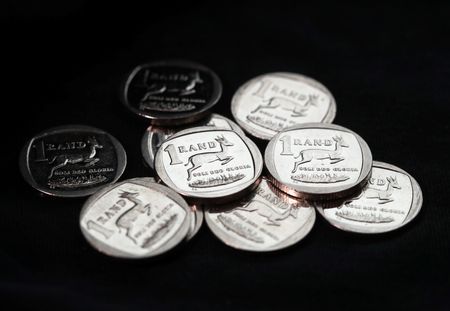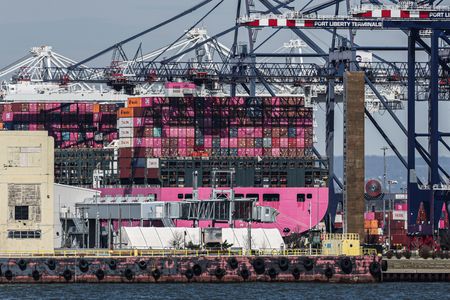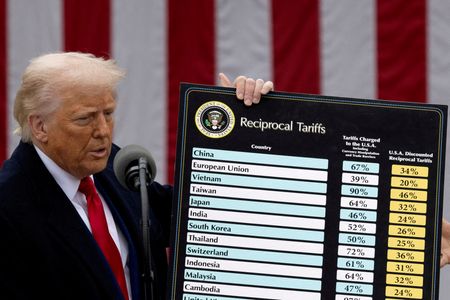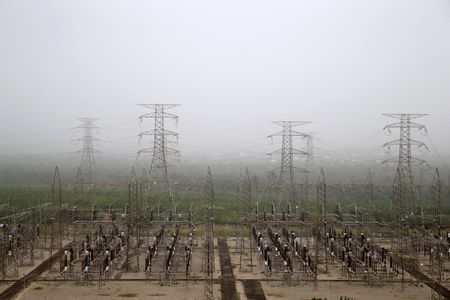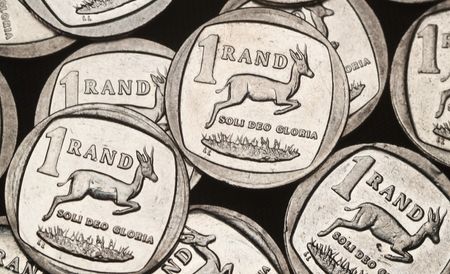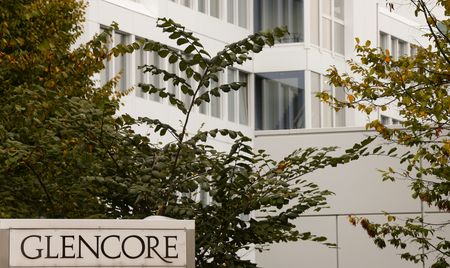By Kevin Buckland
TOKYO (Reuters) -Asian equities rose on Thursday, with Japanese shares hitting a record high, as tech-led gains on Wall Street, upbeat earnings and growing expectations for U.S. rate cuts boosted sentiment.
The prospect of a meeting between U.S. President Donald Trump and Russian President Vladimir Putin over the war in Ukraine also underpinned sentiment, benefitting the euro.
Sterling held its ground at a one-week high going into the Bank of England’s policy announcement later in the day, with a quarter-point cut widely expected, and the focus falling on a possible three-way split within the board.
Chinese stocks and the yuan were supported by upbeat trade data, which helped ease U.S. tariff concerns.
Markets largely shook off Trump’s latest tariff volleys, including an additional 25% tariff on India over purchases of Russian oil and a threatened 100% duty on chips.
“While a 100% tariff rate looks devastating, exemptions for firms investing in the U.S. ‘even though you’re building and you’re not producing yet’ could in fact significantly reduce economic exposures,” Barclays analysts wrote in a note.
However, the extent of the exemptions remains unclear because, “of course, there are no details,” they said.
Japan’s broad Topix index rose 0.9% to reach an all-time high, with the more tech-focused Nikkei also gaining by about the same margin at its highest point.
Taiwan’s stock benchmark surged as much as 2.6% to a more than one-year peak. Shares in TSMC, which this year announced additional investment in its U.S. production facilities, soared 4.9% to a record high.
The KOSPI added 0.6%, with South Korea’s top trade envoy saying Samsung Electronics and SK Hynix will not be subject to 100% tariffs.
Hong Kong’s Hang Seng rose 0.5%, although mainland Chinese blue chips were only slightly higher on the day. The yuan firmed slightly to 7.1819 per dollar in offshore trading.
Pan-European STOXX 50 futures pointed 0.3% higher.
U.S. S&P 500 futures rose 0.2%. On Wednesday, the cash index climbed 0.7%.
“Wall Street seems to have gotten its mojo back,” Capital.com analyst Kyle Rodda wrote in a note.
“However, there are persistent risks to the downside. Downside surprises in official data are increasing,” he said. “Valuations are also stretched, with forward price to earnings hovering around the highest in four years. And trade uncertainty persists.”
The U.S. dollar remained lower against major peers on Thursday, with expectations of easier policy from the Federal Reserve stoked both by some disappointing macroeconomic indicators – not least Friday’s payrolls report – and Trump’s move to install new picks on the Fed board that are likely to share the U.S. President’s dovish views on monetary policy.
Focus is centring on Trump’s nomination to fill a coming vacancy on the Fed’s Board of Governors and candidates for the next chair of the central bank, with current Chair Jerome Powell’s tenure due to end in May.
The dollar index, which gauges the currency against the euro, sterling and four other counterparts, eased slightly to 98.133, extending a 0.6% drop from Wednesday.
The euro added 0.1% to $1.1672, following the previous session’s 0.7% jump.
Sterling rose 0.2% to $1.3371.
The BoE looks poised to cut interest rates for the fifth time in 12 months later on Thursday, but nagging worries about inflation are likely to split its policymakers and cloud the outlook for its next moves.
Two Monetary Policy Committee members may push for a half-point rate cut, and two may lobby for no change.
(Reporting by Kevin Buckland; Editing by Jacqueline Wong and Lincoln Feast.)

